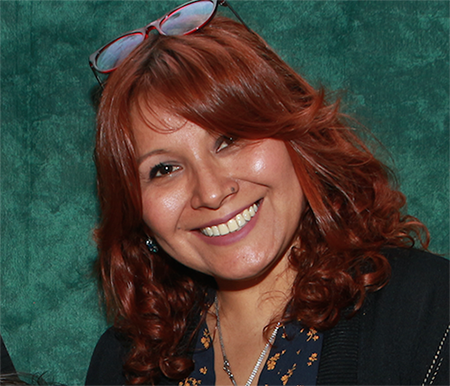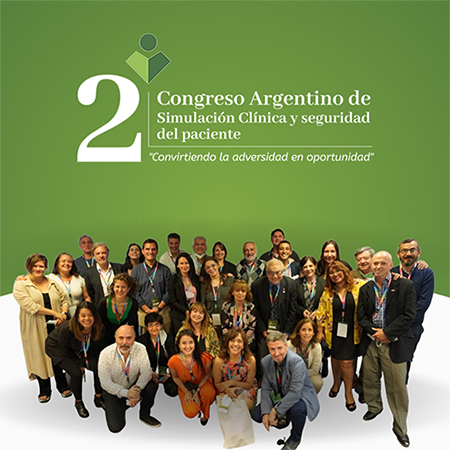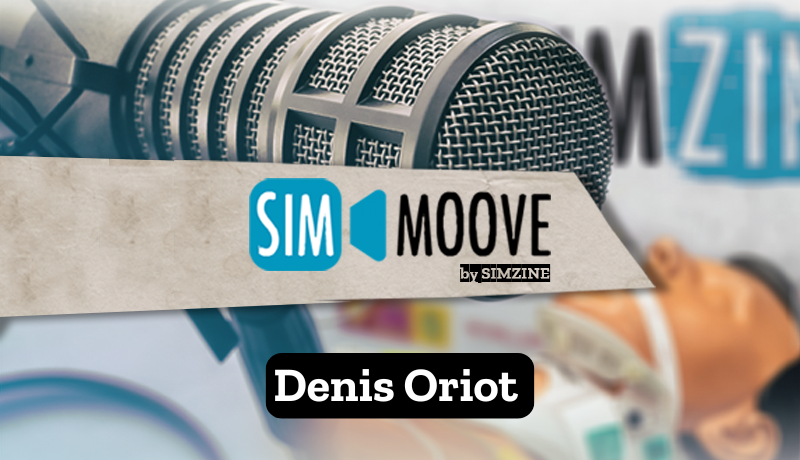Introducing SASIM President Carla Prudencio, who discusses its direction for the coming years, how the Society tackles the big issues, and what are the current challenges in Argentina, along with advice for the entire international simulation community.
The current complexity of health systems, added to the turbulent times we are experiencing due to the sudden outbreak of the COVID-19 pandemic that has dramatically changed the world we knew, make it necessary to reflect deeply on the state of simulation and its development to ensure patient safety. Scientific societies, as organizations of knowledge and experience, have at this time, more than ever, unavoidable duties and commitments, being the main interlocutors of the health, educational and scientific authorities.
SIMZINE wants to make the ideas of those who lead these governing bodies of scientific dissemination known to the public. Today we speak with the magister Carla Prudencio, current president of the Argentine Society for Simulation in Health Sciences and Patient Safety (SASIM). A graduate and professor in Nursing, with a degree in Clinical Simulation, she is currently coordinator of Continuing Nursing Education at the Dr. Juan P. Garrahan Pediatric Hospital.
In this interview, she explains her priorities for SASIM, including that the simulation reaches the entire country, creating networks, generating work groups, agreements with scientific societies and generating guidelines for teaching, simulation spaces, in addition to the profiles of the new roles and functions in the area of clinical simulation.

Carla Prudencio
Magister in Professional Education Health Sciences CCSS. President of SASIM. Former general secretary of the board of directors of the Latin American Federation of Clinical Simulation (FLASIC). Secretary of the Latin American Division of the TALK Clinical Debriefing Foundation. Responsible for nursing simulation at the CESIM Simulation Center and Associate Director of the Emergency and Cardiopulmonary Resuscitation Program at the Dr. Juan P. Garrahan Pediatric Hospital. Training of the four international schools Harvard-Valdecilla, EuSIM, Boston Children’s Hospital and Pennsylvania.
How to contact me
mail: riscarla2001@gmail.com LinkedIn Facebook
Instagram Twitter
Hi Carla. And thank you for sharing your time with our readers.
We start with an easy question. What are you most passionate about in simulation?
What I am most passionate about is having found a meaningful learning space. Create a psychologically safe environment before, during and at the end of the simulation. Adapt the simulation to the needs of the participant, understanding that our teaching role must be different depending on the objective and level of the participants, that is, more of an instructional function or more of a facilitation one.
How would you define the state of simulation and where do you think efforts should be focused as a priority in your country?
The state of simulation in the world is constantly advancing. Argentina is in a great moment of growth and support of public policies for the development of simulation spaces and one of the objectives is to work together with the institutions to generate a synergy of resources and shared knowledge. SASIM has provided collaboration in various activities focused on teacher training and management of national and free spaces for the entire country and this is very important for the growth of a country where education, health and scientific society come together
What is SASIM?
Our Association was created in 2015 thanks to the union of the will of professionals who had begun to explore the path of simulation. It is a non-profit scientific society, whose purpose is to promote and develop activities for the training and maintenance of healthcare team competencies, through reflective practice, thus improving the care, safety and quality of life of patients, their families and the same professionals of the healthcare team. We work to disseminate simulation and implement it as a teaching practice in all areas related to health.
Despite the difficulties suffered and the future ones that all countries now face, we have before us the extraordinary possibility of making in-depth reforms. What role can scientific societies (and, specifically, SASIM) play in general?
Generating spaces for conversation with scientific societies can promote an enormous contribution to incorporate simulation in undergraduate, postgraduate and continuing education. Also promoting multicenter research, to demonstrate the usefulness and benefits of working with simulation in the different regional peculiarities. SASIM stimulates the creation of specialty groups, develops educational activities such as webinars, introductory simulation courses, regional conferences, and documents for teaching and space management, as well as creating profiles.

What is the motivation to be president of a national scientific society, like SASIM?
The great motivation is to believe in change as an opportunity, in marginal gains, in inspiring others to share the value of simulation for the safety of the professional, the patient, and the family. Changes take time and helping the growth of a scientific society means continuing to think about the well-being and quality of care in a country.
How do you face your presidency of SASIM? What are your main objectives for the current mandate?
Every presidency presents challenges, responsibilities and commitments towards society and I face them by sharing decisions together with the board of directors. Therein lies the key to coping with this mandate. An objective as a society is to be able to have a survey of all the simulation spaces in Argentina; knowing how many of us there are and what we do gives us a picture to interpret and make decisions as a scientific society.
In general, simulation needs different professional figures with different skills. As a scientific community, are we paying everyone the same attention?
There we must insist to make specialties work together and support the use of clinical simulation in training programs, and thus all together promote the culture of patient safety. Attention must be paid to the presence of other members in the simulation team: a specialist in educational sciences, a psychologist, a sociologist, a researcher and the simulated patient in order to have a comprehensive and real look at the creation of the scenarios.
The magazines talk about scenario development, learning theory, debriefing, faculty development, etc. But, in your opinion, are we forgetting anything?
From my experience we must generate recommendations on the formation of the team in a simulation space with their profiles and functions, to optimize the use of resources, and professional training in clinical simulation.
Before finishing, would you like to add anything else? Would you like to say something to the entire international community of simulationists?
Yes, and thanks for this question. We owe ourselves a space to talk with all the leaders of clinical simulation, where language and place are not a limitation so that we think about the transformation and generate guidelines for simulation focused on patient safety worldwide.
Thanks for the nice chat. And we invite our readers to learn more about SASIM by visiting the official website or its Youtube channel
READ ALSO






































